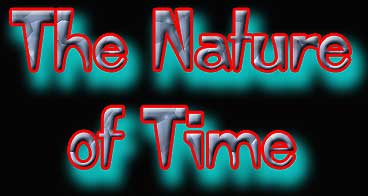
This
describes the Hindu view of Kaal (time). It provides a definition, examines the
nature and explains the concept of time within the context of current scientific
understanding of this complex issue. It explains how Hindus measure time in relation
to the creation, evolution and annihilation of the universe.
Definition
and nature of time
Time is a measure of the elapsed duration of
an event; it has no meaning unless it is associated with some event. Past, present
and future are all relative. The Hindu concept of time, the zodiac, the calendar
and the techniques for astronomical calculations were perfected around 1200 BCE
and were found to be accurate to the third decimal point when compared with modern-day
computations of the same measurable concept (Sylvain Bailley et al., Historic
de l'Astronomic Ancienne, p. 483, and the Proceedings of the Society of Biblical
Archaeology, December 1901, Part 1).
Hindu
concept of cyclic time
The Hindu concept of time is that it is a
continuum and is set and reset in tune with the cyclical nature of the universe,
from Big Bang to Big Crunch. This concept is based on several factors and considerations
concerning the relative motion of earth with respect to other celestial objects,
including:
o the daily rotation of the earth at 3200 k.p.h. around itself;
o
the annual rotation of the earth at over 106,000 k.p.h. around the sun;
o the
motion resulting from the gravitational pull of the star Hercules at 69,500 k.p.h.;
o
the time duration between the two main conjugations of all planets with the first
point of Aries at a reference point on earth.
The concept of time is discussed
in one of the Hindu scriptures, the Rig Veda (first of the four Vedas), and includes
a description of the creation of the universe, the motion of stellar and solar
bodies and a discussion of sidereal and synodic periods. Madeleine Biardeau, in
Hinduism - The Anthropology of Civilization, has compared the Hindu concept
of cyclic time with Western thinking. Whilst cyclic time in the West is associated
with the idea of cosmology governed by movements of the stars, in Hinduism it
is linked to the idea of creation and reabsorption of the world, the process which
is endlessly repeated. The annual cycle of seasons and the feasts which punctuate
them, also favours a conception of time which continually repeats itself.
These
ideas are elaborated in Hindu scriptures like the Surya Siddhanta (a treatise
on the solar system) and in the Vedangas (branches of Vedas) such as Jyotir Shastra
(Science of Light) which was compiled around 1350 BCK. The concepts are further
explained in Srimad Bhagavatam.
Origin of
time
It is remarkable that the Hindu concept and explanations of
the origin of time agree with modern scientific theories. The phrase 'in the beginning',
often used in religious literature such as the Bible, has a profound consequence
upon science as well as religion. The phrase presupposes the existence of 'energy
and matter' bounded by the dimension of 'time and space'. To a mathematician,
'in the beginning' equates to a singularity, where 'time and space' has no meaning
and all the laws of physics break down. Professor Stephen Hawking, in A Brief
History of Time, has described the state of the universe at the beginning of time.
He concludes that at the beginning of time, a singularity existed with all energy
stored at a point with infinitely dense mass. This concept of the entire energy
and matter stored at a point at the beginning of the universe exists in the Hindu
scriptures. The state of each universe at the beginning is described in Rig Veda
(10-121-1) and Atharva Veda (4-2-7) by the words 'Hiranya Garbha', literally meaning
'the seed or womb of all energy'.
The Hindu scriptures offer many ideas about
creation, but they all agree that each universe is ultimately dissolved and transformed
into another one. This transformation point is the 'Big Bang' (known as Bindu
Visphot) which happens periodically and thus sets the process of endless rhythmic
cycles of expansions and contractions ('Big Crunch') of the universe. In this
process, time is also initiated as part of that continuum.
The universe
turns into minute (subtle) form at the time of dissolution and takes gross form
at the time of creation.(Gita, 9-7)
There was a universe before this
one and there will be a, universe after this one.
(Rig VEDA, 10-190-3)
Time
within the context of creation
For Hindus, time is a continuum because
the process of creation and annihilation cycles is 'anaadi' (has no beginning)
and 'ananta' 'endless). There is no reference to the date ,vhen creation first
took place. This rhythmic, cyclical expression of Sristi (creation), Stiti sustenance)
and Laya (destruction) is netaphorically expressed in the Tandava Nritya cosmic
dance) of Lord Shiva (see p.23).
Units of
time
\t each 'Big Bang' time and space dimensions are initiated
and they end when the 'Big Crunch' occurs. Hindus picture the universe is periodically
expanding and contracting and give the name 'Kalpa' to the time-span between the
beginning and the end of such periods or the cycle of one creation. In Hindu scriptures,
time is calculated in terms of divine days and nights. One universal cycle is
called a Kalpa. The current one is called Swetavaraha
Kalpa. Each Kalpa is
further divided into Mahayuga and Yuga . At present we are at the start of the
Kali Yuga, with 425,151 years left in the current Yuga. The current scientific
estimation of the last Big Bang at about 18+ billion years ago can be matched
to certain multiples of the Kalpa.
WHEEL OF TIME
With its
twelve spokes, this wheel of
eternal time Knows no decay and revolves round
the
heavens high.
(ATHARVA VEDA, 9-9-13)